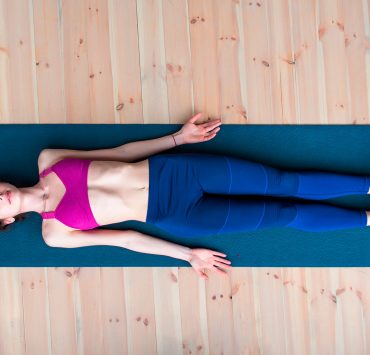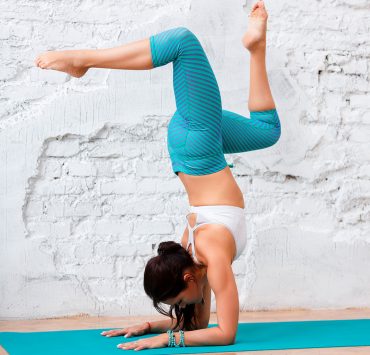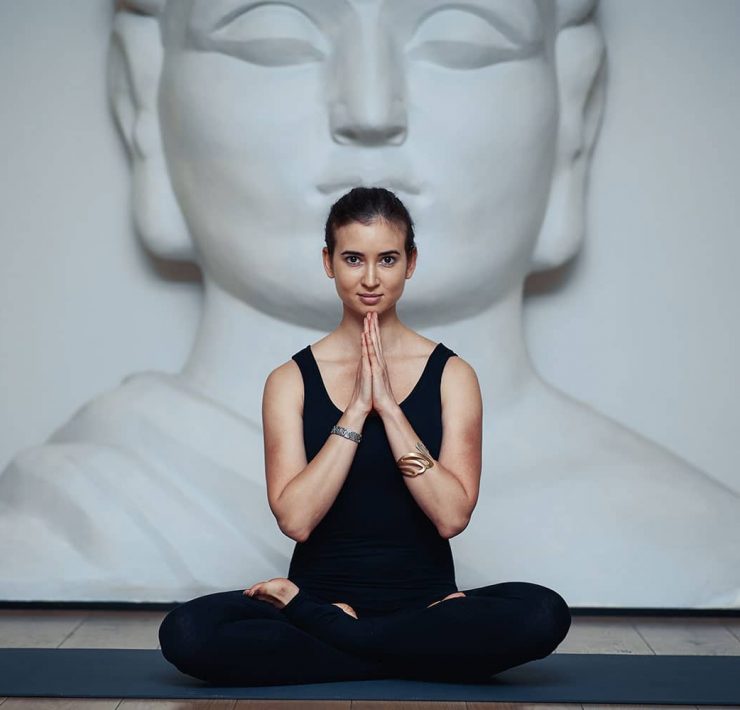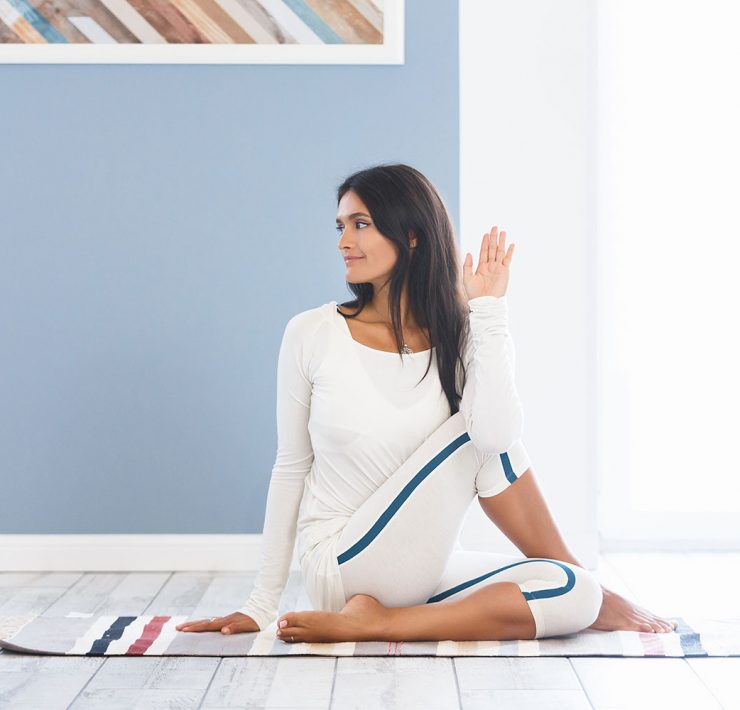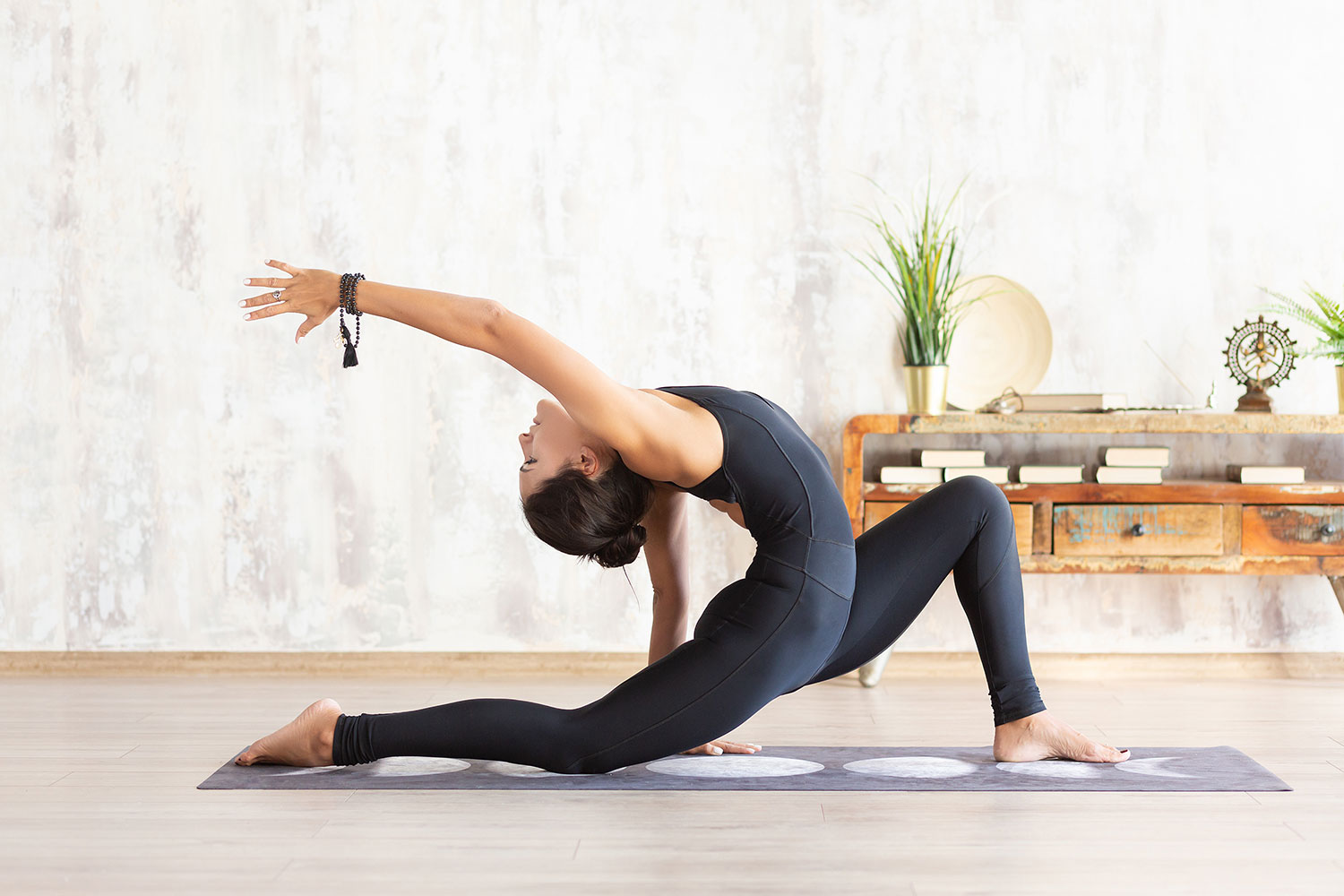
After spending nearly two decades as a relationship therapist, Patricia…
Don’t let that extra mile today keep you from reaching your workout goals tomorrow. Yoga is a valuable tool for healing emotionally and physically while strengthening the body and mind to avoid future distress. Taking time to replenish in this way manifests as gratitude for all the hard work put in. Not to mention how much better the next workout will feel when you’ve given some attention to your aching muscles beforehand. It’s highly beneficial to stretch when the body’s warm, making the time after cardio or weight training most suitable for muscle recovery. Putting in time on the mat will cultivate mindfulness surrounding workouts and how to keep your body healthy after breaking a sweat. This doesn’t always involve intense yoga postures for the deepest stretch, sometimes it serves to simply rest and appreciate the body for what it’s accomplished. Make yoga an essential part of your post-burn routine to restore and refresh, getting your body ready to break another sweat.
Kapotasana — Pigeon Pose

Muscular tension is a common affliction following workouts and translates to various spaces in the body. This discomfort can be remedied by loosening tension through yoga and bringing space to condensed areas. The hips are often more locked up than we even realize, which causes other areas to become tense. Pigeon pose is a staple for relieving the hip rotators and flexors while providing a great release across the glutes and inner thighs. Try an upright variation by starting in a low lunge with the right foot forward. Slowly walk your right foot towards the left as the knee drops down. Keep the bag leg straight with the toes untucked as you ease into the right hip. Taking blocks or a bolster under the right hip increase the accessibility of this shape without compromising the benefits. Other modifications, including reclined and seated, are fantastic if you’re not feeling the upright option.
Adho Mukha Svanasana — Downward Facing Dog Pose

If you’ve ever taken a yoga class, then chances are you’re no stranger to downward facing dog pose. This posture brings space and length to the entire back body, elongating the spine and releasing hamstring and calf muscles. Starting from a tabletop position, move the hands slightly forward and tuck the toes. Spread the fingers wide and draw the forearms towards each other as you lift the knees on a breath in. Send the hips up and back while straightening the legs on your next exhale. Let the head and neck go heavy while continuing to draw the feet isometrically towards the hands. Explore any movements that feel appropriate, pedaling the feet or waving the hips.
Supta Padangusthasana — Reclined Hand To Big Toe Pose

Tight hamstrings translate as tension in the lower back that’s hard to ignore. Relieving this area will feel good following a workout and prevent aches that might hinder your range of motion. Come to a reclined position with both legs active and feet flexed. Exhale to bring one knee towards the chest while keeping the other leg active and grounded. On an inhale, lengthen the bent leg towards the ceiling. This stretch is fun to try with a yoga strap around the sole of your foot, or if you’re feeling more spacious, abandon the strap and grab for your big toe, calf, or thigh. Whatever variation you’ve taken, extend your heel towards the ceiling and use every exhale to carry the leg further down.
Supta Matsyendrasana — Supine Twist Pose

Supine twists free muscles along the length of the spine and into the neck while detoxifying the body. Lie on your back with arms extended out to the sides and one knee drawn in towards the chest. Use the opposite hand to guide the bent knee across the body on an exhale, and if it feels okay on the neck, take your gaze away to complete the full spiral of the twist. Employ a bolster under the bent leg for a more restorative expression of this shape. Ground through both shoulders as you breathe deep into the abdomen.
Supta Baddha Konasana — Reclining Bound Angle Pose

Bound angle pose presents a stretch for the hip flexors and releases the lower back, making it a restorative treat following workouts. Props can reduce the amount of energy needed to offer more restorative experience. Start lying down with knees bent and feet flat on the mat. Begin to draw the soles of the feet together as you let the knees fall heavy to the sides, perhaps bringing blocks under the thighs for added support. Externally rotate the shoulders to counter the strain we place on them during routine daily tasks. Let the eyes soften shut, and the senses draw inward as you take time to receive and reflect in this shape.
Uttanasana — Standing Forward Fold Pose

Forward folds stretch the back and hamstrings, making them ideal for gently reducing pain along the entire back line of fascia. Move mindfully by following the breath in to lengthen and out to deepen the fold. There are various possibilities for forward folds including standing, seated, and wide-legged. Determine which best suits where your needs are and surrender into that expression. Regardless of which fold you enter, make sure to keep cautious of any displaced tension in the body. Let the head, neck, and muscles of the face fully relax even when the primary focus is elsewhere.
Parsva Balasana — Thread the Needle Pose

It’s hard to ignore constriction in the shoulders, especially when it comes to working out. Thread the needle is an excellent pose for melting down into the shoulder tissues while strengthening the rotator cuffs. From child’s pose, start sliding your left hand under the right arm with palm facing up while turning your left cheek down to the mat or a block. With each exhale let your weight release into the left shoulder blade and focus on softening all the surrounding muscles. Another option is to begin in a tabletop position with knees stacked under hips and thread the needle from there. This variation offers a bit more space to modify and deepen if you desire.
Salamba Balanasana — Child’s Pose

Child’s pose is a haven that most visit when trying to catch their breath during practice or to simply restore the body. It’s a therapeutic and grounding posture that heightens the relationship between body and mind while nurturing the back and hips. Relaxing the front side of the body eases the nervous system and delivers a sense of calm to your entire being. Starting on all fours, bring the knees and thighs together for extra support, or wide with feet together for a deeper release. Walk the hands out and let the forehead come to rest on either the mat, a block, or bring a bolster under the whole upper body. Imagine breath entering a channel in the back of the lungs, filling up between the ribs to create space. Breathing out, let the body melt down and release any tension still being carried.
Savasana — Corpse Pose

Savasana is the final posture in most yoga classes and gives the body a chance to absorb the benefits of practice without disruption. Maintaining breath awareness and keeping the mind focused on the present moment requires practice and acceptance. When our thoughts wander away from what’s currently happening, it serves to gently draw them back instead of criticizing our abilities. Explore positions that feels restful and supportive to help facilitate calming the channels of the mind. Laying down with a bolster under the knees or a blanket covering the body is a great option, but find what works for you.
Anjaneyasana — Low Lunge Pose

Low lunges require an element of strength that’s met with increased flexibility and range of motion. There’s a reason so many yoga classes feature this posture as it opens the hip flexors and develops pelvic muscles. From downward facing dog, step your right foot forward between the thumbs. Drop the left knee down and bring the hands to blocks, the front thigh, or raise both arms overhead. Low lunges are an excellent tool for examining and releasing any tightness in the hip flexors, so stay present and acknowledge where you’re feeling it. Stack the front knee over the ankle and draw the inner thighs together to create a lift in the upper body. Let the pelvis move down and forward as you enter the sensation and surrender into the stretch.
Virabhadrasana II — Warrior II

Embrace your power, explore your strength, and overcome discomfort using the warrior postures. You can expect to experience numerous bonuses including reduced back pain, increased respiratory function, and healthier circulation. Start standing at the front of the mat and step your left foot back to take a wide stance. Point your right toes forward and turn the left foot flat, aligning the front heel with the back arch. Sink deep into the front knee open towards the pinky toe edge of the mat. Feel the tailbone rooting towards the floor as you open the arms to the sides, palms facing down. Reach equally in both directions and follow your gaze over the front hand. With each exhale, release the shoulders down the back and let the thighs inward.
Supta Virasana — Reclined Hero’s Pose

Feeling tight across the chest, shoulders, and abdomen can be debilitating and make daily activities extra challenging, let alone working out. Reclined hero pose will elongate the upper body and breathe space into constricted areas for sweet relief. Bolsters are great for exploring this posture while avoiding the risk of injury from pushing too far, but if your body is craving more try it without props. Start kneeling in front of the bolster with shins kept tight to the body and both sit bones rooted down. Use your elbows for support as you slowly lower the back body down on the bolster. Knit the ribs in and draw the pubic bone up to bring more space to the lower back.
Parsvottanasana Yoga — Pyramid Pose

Similar to real pyramids, this pose asks us to find our inner strength and stand rooted in stability. In addition to challenging the body physically, it relieves aches from the legs and back. From a standing position, step your right foot back roughly two feet with both hips pointing forward. Find an arm variation that works for where you’re at; grab opposite elbows behind the back, take reverse prayer, or bring the arms up by the ears. Take an inhale to lengthen the heart up and exhale to hinge forward with a straight spine. Continue to draw your left hip back as you root through both big toes for stability. Take a bend in the front knee and bring blocks under the hands if that helps you ease into the stretch.
Viparita Karani — Legs Up The Wall Pose

The internal benefits of this posture are almost forgotten as you drift off in its restorative nature. It’s good to give the physical body a break to promote healing, but this shape doesn’t overlook the mental state either. Resting with the legs up aids the function of our lymphatic system to carry toxins from the body while boosting our mood. Stress and anxiety are diminished while back pain is minimized, bringing a state of calm to the whole body. Use a bolster or blanket under the sit bones and bring one hip towards the wall. Carefully windmill the legs up as you rest the upper body back and let the arms go heavy to the sides. Continue to breathe here and try to enter a state of meditation and deep relaxation.
What's Your Reaction?
After spending nearly two decades as a relationship therapist, Patricia journeyed down the path of writing as a vehicle for sharing her wisdom. Her work reflects a sincere interest in readers’ wellbeing and is abundant with helpful advice and fascinating insight.






